As an Amazon Associate I earn from qualifying purchases.
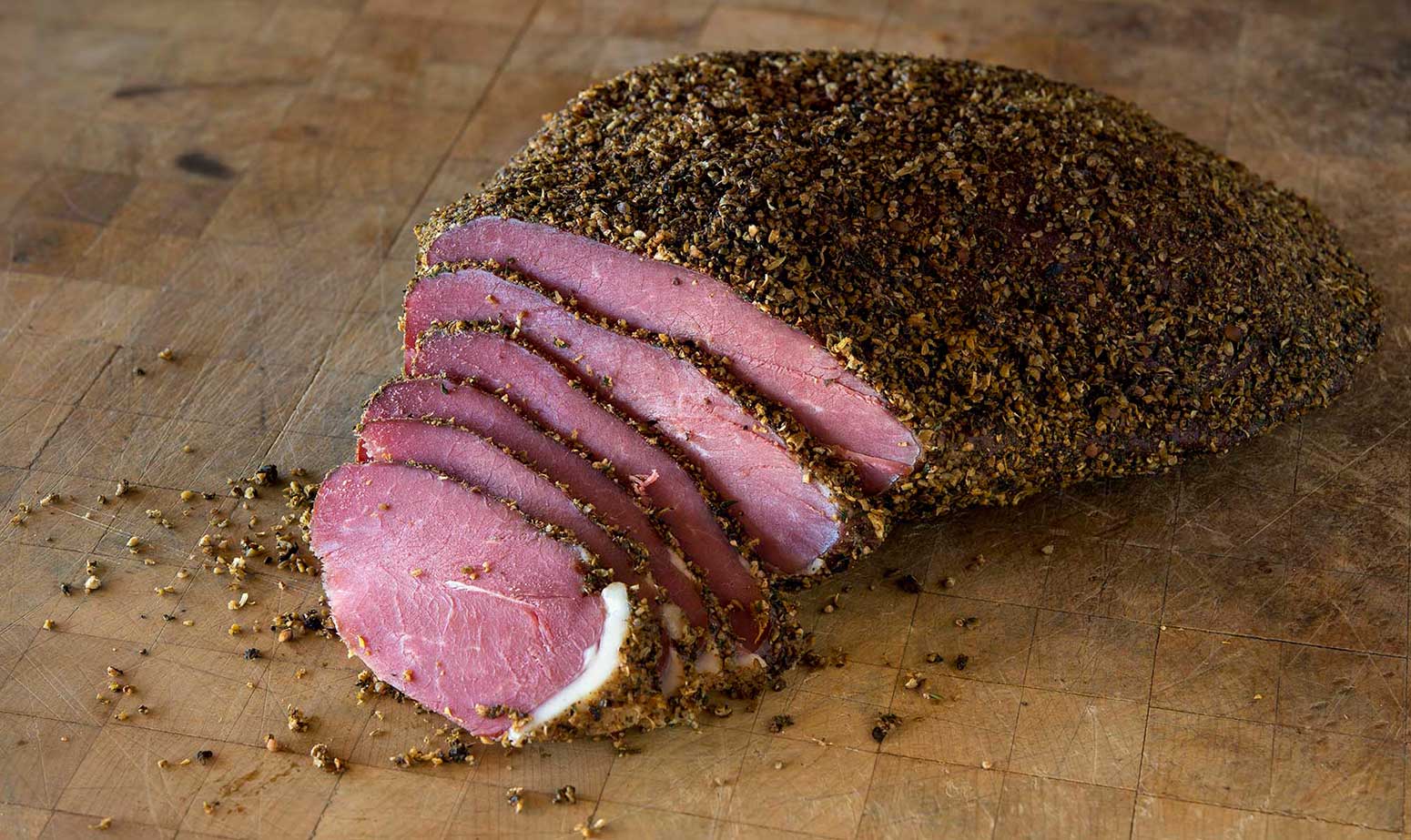
Venison pastrami is one of the great things to do with hind leg roasts.
If you’re not familiar with pastrami, or just know it as some random lunch meat, it’s cured, smoked, spiced meat, usually beef, that is often steamed before slicing. We owe our love of pastrami to Eastern European Jews — pastrami sandwiches are always best eaten from Jewish delis — and variants of this meat exists all over that part of the world.
Here in California’s Central Valley, where I live, our local Armenian population enjoys basturma, it’s own version of pastrami. I’ve long made goose pastrami, which was a favorite of Romanian Jewish people back in the 1800s. I like it with Canada goose breasts.
I highly recommend that you use a single-muscle roast, ideally from the hind leg, or even backstrap for this recipe, as this is a lean, smoked meat that you’ll end up slicing thin and serving in a sandwich.
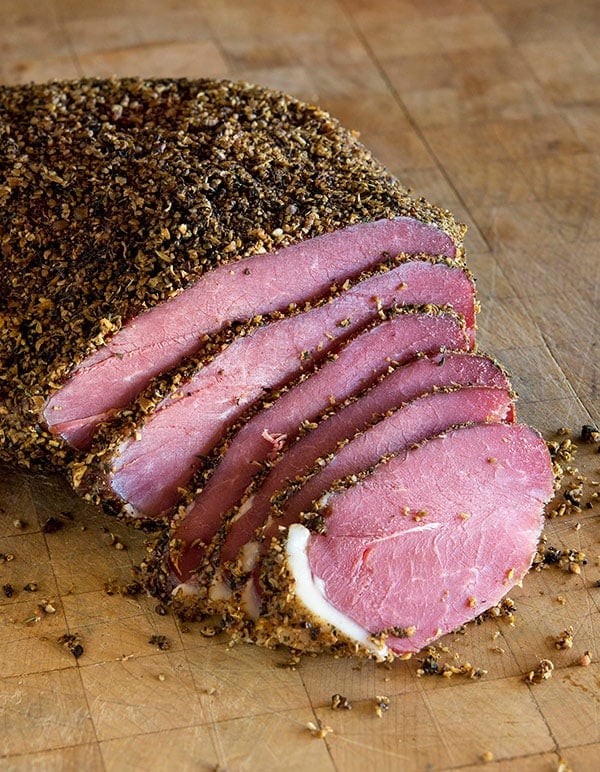
If you use larger cuts, you will have silverskin or connective tissue in your roast that will not soften when you eat it. But that’s where the steaming comes in. I rarely do this, but here’s how to steam pastrami if you need to:
- Preheat your oven to 275°F.
- Set a big roasting pan in the oven and pour boiling water in it so the water is about 1 inch deep.
- Put a rack in the pan to keep the pastrami elevated over the water level.
- Ideally you cover this whole shebang with foil to keep the steam in, but you can also just keep the oven closed. It’ll work.
- Insert a thermometer into the thickest part of your pastrami and pull it when it reaches 165°F. Let the meat rest 30 minutes, still covered, before slicing.
Salt content varies. I like my pastrami on the salty side, because it’s served cold and the human perception of salt is limited with cold foods. I have taken to using a set amount of salt based on the weight of the meat. I like 2 percent, so 20 grams in a 1000 gram roast. Don’t go lower than 1 percent, or higher than 3 percent.
A word on the curing salt. The 3 grams I call for will actually be enough to cure up to about 3 pounds of venison. A general rule is to use 0.25% Instacure based off the weight of the meat, so a 1000 gram roast would use 2.5 grams of Instacure. Do not use much more than I call for, though. If you used 3 grams in this case, it’d be fine, but don’t accidentally use, say, 6 grams.
Keep an eye on your venison’s internal temperature when you are smoking it. A piece of backstrap can be ready in 90 minutes in a hot smoker, which to my mind isn’t enough time on the smoke. Try to keep your smoker at 200°F or cooler; I like to keep it at 165°F, which lets me smoke the meat for a solid 3 to 4 hours.
What wood? Your choice. I prefer oak, maple or hickory for this, followed by walnut, pecan or cherry.
Once you make your venison pastrami, it will need to be eaten within a week or two, or you’ll need to vacuum seal and freeze it.
Venison Pastrami
Ingredients
- A venison roast, hind leg or backstrap
- Kosher salt (see recipe notes)
- Instacure No. 1 (see recipe notes)
- 1/2 teaspoon dried thyme
- 1/4 teaspoon celery seed
- 1/4 teaspoon caraway seed
- 1 teaspoon sugar
- 1/4 teaspoon crushed juniper (optional)
- 1 teaspoon ground black pepper, plus 3 tablespoon ground black pepper
- 1/4 cup brandy, red wine, vinegar or water
- 3 tablespoons coarsely ground coriander
Instructions
- Weigh your venison. For every pound of meat, you’ll need 10 grams of kosher salt and about 1.5 grams curing salt. Mix the salt, curing salt, sugar as well as the thyme, celery seed, caraway, juniper and the teaspoon of black pepper and grind them all together in a spice grinder. Pack the venison with this mixture, massaging it into the meat. Vacuum seal or put the meat into a Ziploc bag or closed container and set it in the fridge for 3 to 5 days. A general rule is 2 days per pound of meat. If you’re unsure, leave the meat in one more day than you think you need to. This salt ratio will prevent the meat from getting overly salty.
- Rinse the cure off the venison and pat it dry. It’s fine if you have a little bit of the cure stuck to the meat, but you don’t want too much. Put the venison on a rack in the fridge and let it dry uncovered for up to a day.
- Dip the meat into the brandy — or really any other liquid you want — and then coat thoroughly in the 3 tablespoons of remaining black pepper and ground coriander seed. I like to grind this myself so the texture is a little coarse, a little fine. Press it into the meat well.
- Smoke the venison at about 165°F to 200°F until the interior hits 145°F, which takes me about 3 hours. Let the pastrami cool and eat as lunch meat, or on crackers or whatever.
Nutrition
Nutrition information is automatically calculated, so should only be used as an approximation.

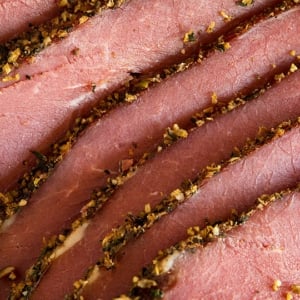
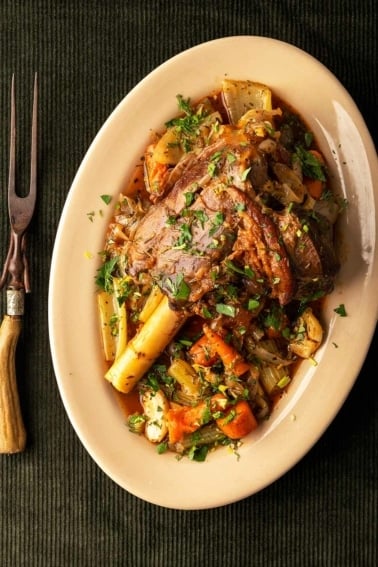
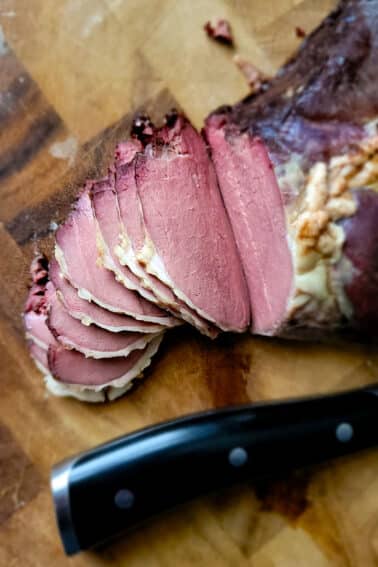
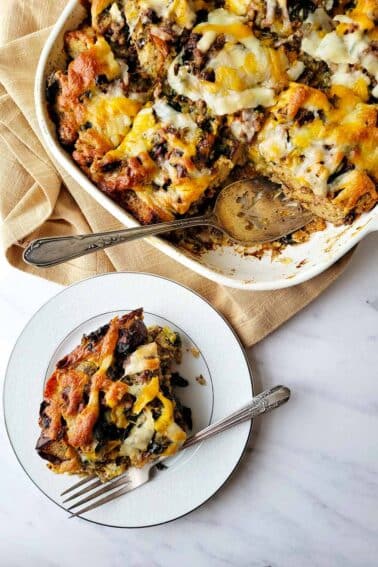
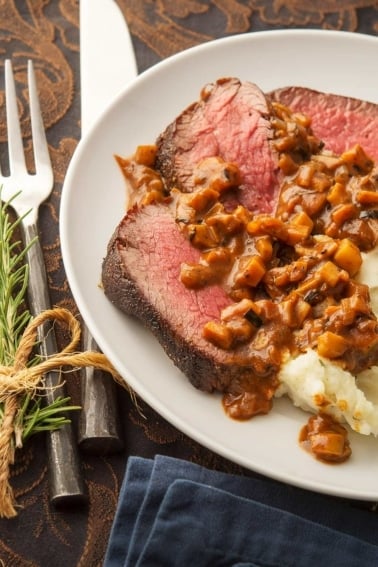
Took a huge western WA blacktail roast and brined it for 10 days then boiled half and smoked the other half…both were AMAZING!!! wow…going to continue to enjoy these ideas and reicpes…..thanks for the help!!!
I used a big Whitetail buck leg roast for this and smoked it over pecan wood, it turned out fantastic. Will definitely be keeping this in rotation, maybe even do it with every deer we get this season. So good!
Made the pastrami and corned venison this last week,everyone that’s tried it has loved it. Whitetail Sirloins. Great recipes Thanks
RE: the coyote question, yes, I should have stipulated that it will get cooked to high enough IT to ensure complete and total trichinellicide, and maybe also par-cooked before smoking for toughness a la venison ribs.
I know you’ve talked about drawing certain lines for yourself, but would you recommend any modifications to this recipe if using meat from a coyote?
Ben: No idea, but if it were me, I’d be sure to cook it a long time.
Excellent recipe. Thanks Hank. Just made it with a mule deer hind quarter (2lb part of). Removed as much of the surface silverskin. I added a bit of manual massaging (kneading with knuckles) every evening as I didn’t have a chance to apply the # 1 prague curing salt up until 24 hours before the smoker. Otherwise followed the recipe and let it get to 145 internal before pulling it and letting it sit 30 min prior to slicing.
I think flattening it by kneading helped get the cure penetrate deeper and made the final product more of a flatter strip shape rather than round roast shape. There was no pink outside ring and brown inside, which I was very happy about provided the late curing salt addition. The meat fibre resembled Montreal style cured beef. I found the taste and texture excellent. Savoury around the bark and very tender and mild (nice not deer flavour that wasn’t overpowered) on the inside.
Was a hit with a bunch of friends. Slapped it on some sourdough with homemade pickles , dijon and mayonnaise.
Made this with a whole hind quarter off a young buck, let me just say it was amazing! due to it being a whole leg my smoke and cure time was longer. I know it say Juniper berries are optional, I wouldn’t leave them out the floral flavors that come from them are irreplaceable. Used the caraway seed but also added some mignonette instead of just black pepper. Only down fall of the whole leg was the silver skin that you can’t cut off but due to the age of the deer it wasn’t terribly tough, I recommend using a meat slicer for the perfect deli meat. Cheers!
I made this recipe from a venison sirloin. It was good… but too salty. The sirloin weighed 1.75 lbs. So I don’t know whether I should reduce the quantity of salt or the time that it sat in brine. This was my first attempt at pastrami. It sat in the brine for 3.5 days. When I washed the brine off, I also discovered a lot of silverskin that I hadn’t seen before. I trimmed all that off to the point that the sirloin became 6 pieces instead of one. So by the time it went into the smoker, the brine was completely off the outside of the meat. And I tied the 6 pieces into a roll so it wouldn’t get too much smoke. So… time or salt quantity?
TJ: Salt quantity. And let me ask you, how were you eating this? This salt quantity is set for thinly sliced pastrami, as in for sandwiches, served cold. Those two things require more salt in the meat so it tastes right. The other thing is that everyone’s salt tolerance is different. So it might be that, too.
Hey Hank,
This may be a stupid question, but at what point do you do the steaming? After smoking? Instead of smoking? I have some moose roasts that have some pretty tough connective tissue running through them…
When you say “juniper”, do you mean the berries, the leaves… I haven’t cooked with juniper before.
Hi Hank,
I have been making Venison pastrami for a few years now. I wet cure the Venison in a brine made for larger batches in a food grade bucket with outstanding results. This way I can have both corned Venison and some roasts that I coat with home made pastrami spices and smoke… Best of both worlds!
Oh my! Thanks for sharing!
I have a bone in rump roast in the freezer should I debone? This is the recipe that cut has been waiting for!
Jake: Yes, it will make the pastrami easier to slice.
Bill, thanks. I love corned beef so I’ll try again with t he antelope.
Or maybe I’ll try first with deer. Antelope is so lean I just wonder if it won’t cure correctly.
Hank,
Thanks for posting this recipe. It’s nice to see a pastrami recipe for a more lean cut of meat instead of the brisket. I’m looking forward to trying this out. Thanks again for all of your efforts in posting these recipes.
I have been making vension bresola since the mid 80s a friend who taught catering gave me the ingredients list. So easy – put in the marinade and forget about it.
Hi Pat, I’m sorry to hear about your corned antelope, but I urge you to try again using Hank’s recipe: https://honest-food.net/corned-venison-recipe/
I used this recipe and gave close friends and family some sliced corned venison and a fresh loaf of home-baked caraway rye bread. My only regret is not making more so that I could keep some for myself.
Hank
I don’t have a weigh scale that can measure 3 grams. How much #1 cure, in a teaspoon measure, equals 3 grams??
Seriously, you need a gram scale that you can get for under 20 bucks at Amazon it you are using pink salts. All good chefs use grams on the ingredients that really matter and take copious notes as they are developing a recipe.
I’ll definitely try this! I have so much elk and venison that would be great for that huge 1-1/2 foot long elk leg muscle. My guess 6-8 lbs. is there any special treatment for a muscle that thick?
John: Yes, time. You may need to keep it in the cure for more than a week in the fridge. I highly recommend you weigh your salt and do that ratio I mention, about 1.5% salt, no more than 2% salt, and 0.25% cure no. 1.
I’ll have to give this a try.
I’ve tried to corn antelope, fwiw. The only recipe I had was for corned bear, so I went with it.
Not a success.